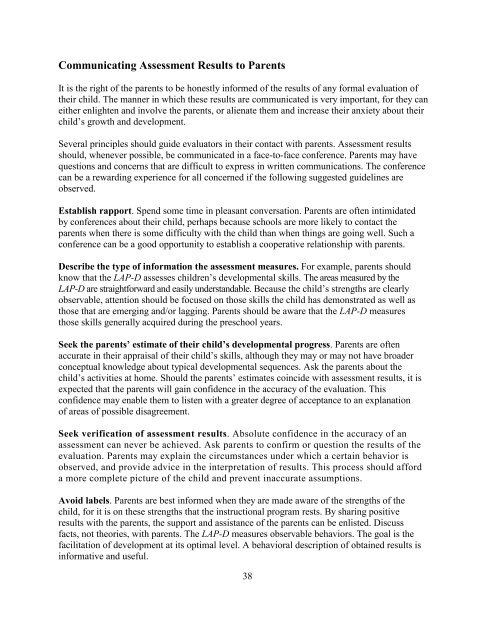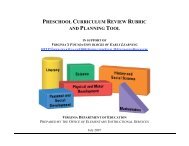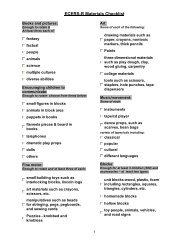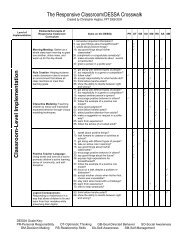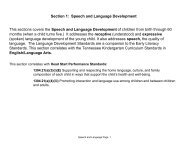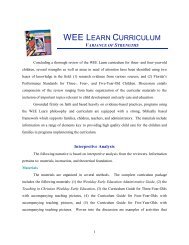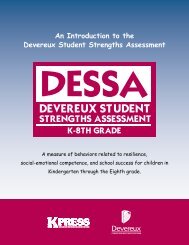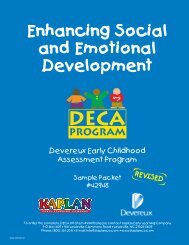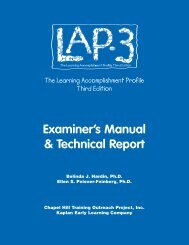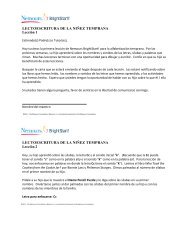Examiner's Manual & Technical Report - Kaplanco.com
Examiner's Manual & Technical Report - Kaplanco.com
Examiner's Manual & Technical Report - Kaplanco.com
- No tags were found...
You also want an ePaper? Increase the reach of your titles
YUMPU automatically turns print PDFs into web optimized ePapers that Google loves.
Communicating Assessment Results to ParentsIt is the right of the parents to be honestly informed of the results of any formal evaluation oftheir child. The manner in which these results are <strong>com</strong>municated is very important, for they caneither enlighten and involve the parents, or alienate them and increase their anxiety about theirchild’s growth and development.Several principles should guide evaluators in their contact with parents. Assessment resultsshould, whenever possible, be <strong>com</strong>municated in a face-to-face conference. Parents may havequestions and concerns that are difficult to express in written <strong>com</strong>munications. The conferencecan be a rewarding experience for all concerned if the following suggested guidelines areobserved.Establish rapport. Spend some time in pleasant conversation. Parents are often intimidatedby conferences about their child, perhaps because schools are more likely to contact theparents when there is some difficulty with the child than when things are going well. Such aconference can be a good opportunity to establish a cooperative relationship with parents.Describe the type of information the assessment measures. For example, parents shouldknow that the LAP-D assesses children’s developmental skills. The areas measured by theLAP-D are straightforward and easily understandable. Because the child’s strengths are clearlyobservable, attention should be focused on those skills the child has demonstrated as well asthose that are emerging and/or lagging. Parents should be aware that the LAP-D measuresthose skills generally acquired during the preschool years.Seek the parents’ estimate of their child’s developmental progress. Parents are oftenaccurate in their appraisal of their child’s skills, although they may or may not have broaderconceptual knowledge about typical developmental sequences. Ask the parents about thechild’s activities at home. Should the parents’ estimates coincide with assessment results, it isexpected that the parents will gain confidence in the accuracy of the evaluation. Thisconfidence may enable them to listen with a greater degree of acceptance to an explanationof areas of possible disagreement.Seek verification of assessment results. Absolute confidence in the accuracy of anassessment can never be achieved. Ask parents to confirm or question the results of theevaluation. Parents may explain the circumstances under which a certain behavior isobserved, and provide advice in the interpretation of results. This process should afforda more <strong>com</strong>plete picture of the child and prevent inaccurate assumptions.Avoid labels. Parents are best informed when they are made aware of the strengths of thechild, for it is on these strengths that the instructional program rests. By sharing positiveresults with the parents, the support and assistance of the parents can be enlisted. Discussfacts, not theories, with parents. The LAP-D measures observable behaviors. The goal is thefacilitation of development at its optimal level. A behavioral description of obtained results isinformative and useful.38


